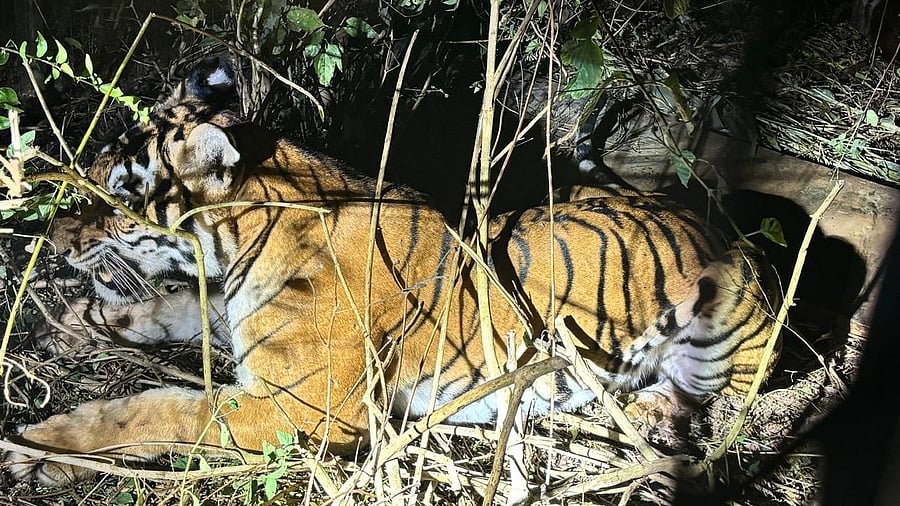
Tiger. Representative image.
Credit: Special Arrangement
Bengaluru: The population of tigers across the five reserves in Karnataka continued to drop for the third consecutive year, with the figure for 2024 standing at 393. While the number of big cats across the state stood at 417 in 2022, it dropped to 408 in 2023.
The National Tiger Conservation Authority’s (NTCA) protocol stipulates that the tiger, co-predator, elephant and prey estimation be conducted every four years in all tiger habitats across the country as part of the All India Tiger Estimation (AITE). And as part of annual monitoring of tigers and prey in tiger reserves, the NTCA has advised conducting Phase 4 monitoring surveys every year.
Karnataka has been conducting these surveys since 2015, said the Forest Department.
The latest Phase 4 monitoring surveys were conducted from November 2023 to February 2024 in all five tiger reserves of the state: Nagarahole, Bandipur, Bhadra, BRT and Kali (Dandeli-Anshi).
The field surveys primarily include a camera trap survey used for estimating the population of tiger and co-predators, coupled with a line transect survey used for prey population estimation.
In all, camera traps were installed at 2,160 locations in the tiger reserves, which provided around 61 lakh images of all wildlife species. Tiger images were further segregated using an Artificial Intelligence-based software and then processed to identify individual tigers based on the unique stripe patterns on both sides (flanks) of each tiger.
The department released the data on Thursday.
The latest report includes observations of a few individual tigers moving across the landscape from tiger reserves to other tiger habitat areas in the state, the department said in a statement.
The Forest Department pointed to many sources of evidence, which indicate that tigers have dispersed from the reserves to adjoining habitats in search of territory. “Due to the dispersal of tigers, fluctuations have been observed in the annual tiger population estimation of the five tiger reserves,” it stated.
However, the state-wide tiger population, which is assessed once in every four years during the All India Tiger Estimation (AITE), has shown a steady increase in the tiger population in the state, the department noted.
